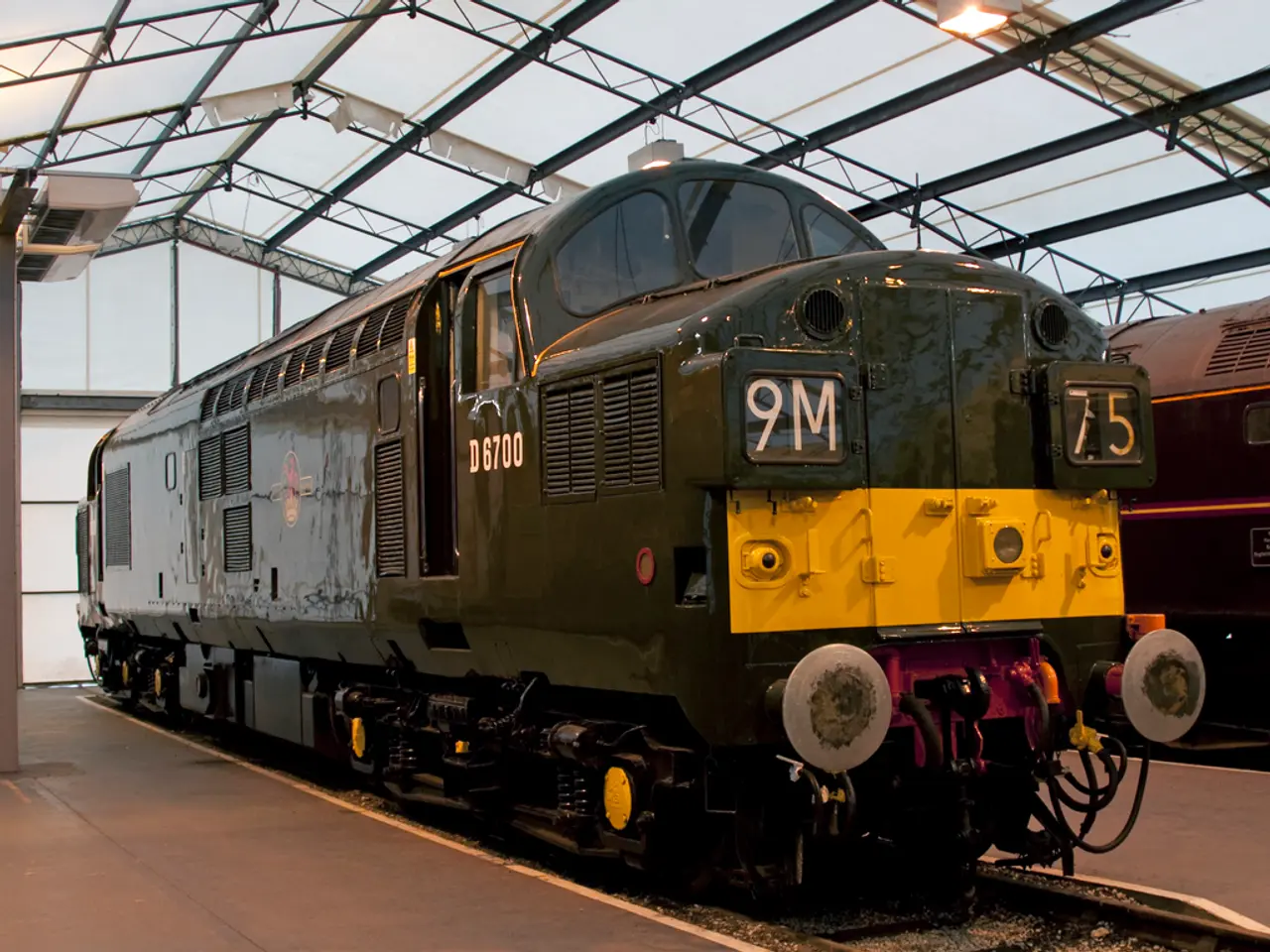Rail service proposals advanced during winter for commuting between Anchorage and the Mat-Su region
The idea of a commuter rail service between Anchorage and the Matanuska-Susitna (Mat-Su) Borough has been a topic of discussion for over four decades, but as of mid-2025, the project remains in the advocacy and planning stage without concrete financial backing or government endorsement [1][2].
The Alaska Commuter Rail Coalition has recently presented a preliminary proposal for a two-year winter train pilot project, which could potentially start as early as fall 2026 or more realistically in 2027, contingent on securing funding and government support [1][2]. This proposed pilot project envisions two daily round-trip trains running on existing Alaska Railroad tracks, connecting stations like Wasilla to downtown Anchorage and the airport.
Supporters of the commuter trains believe they could alleviate traffic congestion on the Glenn Highway, improve safety, and reduce fossil fuel consumption. However, there is skepticism due to the long history of studies without implementation and current officials, including Anchorage’s mayor, have not prioritized the project [1][2].
Funding sources have not been identified yet, and obtaining government buy-in remains a key obstacle. Federal grants from the U.S. Department of Transportation could be a potential funding source, but they typically require a 20% local match from a municipal entity such as Anchorage and Mat-Su [1][2].
In Mat-Su, commuter rail is expected to come up in the long-range planning process as local officials establish a transit program under a recently formed Metropolitan Planning Organization. The Matanuska-Susitna Borough, Alaska’s fastest-growing region, with over 117,600 residents, has provided $1.5 million to the City of Wasilla to support the depot and is also supporting regional public transit [1][2].
The most recent estimates put the cost of the Anchorage-Mat-Su pilot project at approximately $10 million per year, not including the cost of a new siding section of track at Wasilla [1][2]. The proposed project requires approximately $10 million per year, not including the cost of a new siding section of track at Wasilla.
Railroad officials suggest that ride-share vans currently traveling the Glenn between Mat-Su and Anchorage could shuttle workers from rail terminals instead. However, this proposal has not been well-received by advocates of the commuter rail service.
Members of the general public, including elected officials, tend to be wary of movement on commuter rail after years of fruitless talk. In 2014 and 2017, the commuter rail idea was pitched again, but with no results. Gov. Bill Walker included a $4.5 million earmark to revitalize dormant commuter rail plans in his capital budget proposal in 2017, and a task force was established to come up with options between Anchorage and Mat-Su. However, the task force was disbanded in 2019 by Gov. Mike Dunleavy [1][2].
In summary:
- Current status: No funding or formal commitment; project remains a proposal by advocates.
- Funding options: Unclear; securing funds is a prerequisite for starting a pilot rail service.
- Timeline: Earliest pilot launch in late 2026, more realistically 2027, if funding and support materialize.
- Goals: Reduce highway traffic, improve safety, and decrease emissions using the existing Alaska Railroad infrastructure.
As the debate continues, the future of the commuter rail service between Anchorage and the Mat-Su Borough remains uncertain.
Rail industry stakeholders continue to explore finance options for the proposed commuter rail project, with potential sources including federal transportation grants requiring a municipal match. The public transit sector may also play a role in securing funds, as the Matanuska-Susitna Borough has already provided funding for the Wasilla depot.
If successful in securing the necessary funds and obtaining government support, the pilot project could revolutionize the transportation industry in Alaska, offering a superior alternative to public-transit users along the Glenn Highway, improving safety, and reducing fossil fuel consumption.




